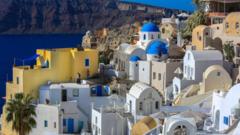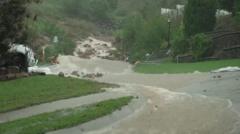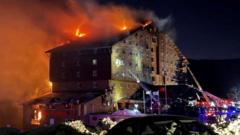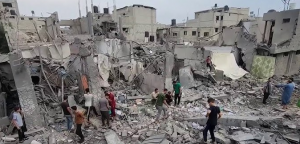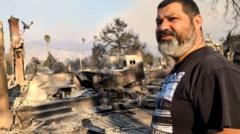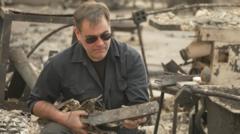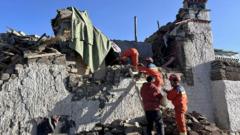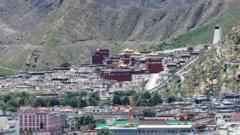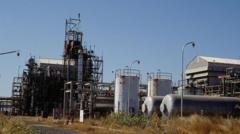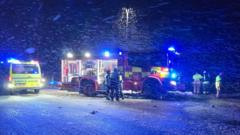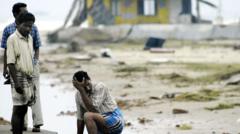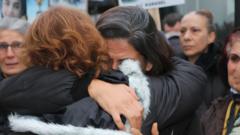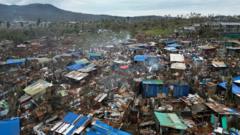**A first-hand account reveals the chaos and destruction of the Andaman and Nicobar Islands as they faced an unimaginable disaster, drawing attention to the lives forever changed by that day.**
**The Day the Sea Turned: A Survivor's Tale from the 2004 Tsunami**
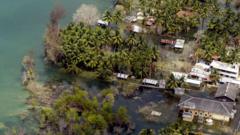
**The Day the Sea Turned: A Survivor's Tale from the 2004 Tsunami**
**Reflecting on the devastation of the 2004 Boxing Day tsunami, one survivor recounts their harrowing experience.**
On Boxing Day, 2004, while I was aboard a ferry bound for Havelock Island in the Andaman and Nicobar archipelago, life was about to change forever. It was my first visit to this tropical paradise, famous for its breathtaking beaches, and I felt excitement in the crisp morning air. Just hours earlier, we had been gathering supplies for fun-filled days at Radhanagar beach, which had been recently hailed as "Asia's Best Beach."
Everything shifted at 06:30 AM (01:00 GMT) when the earth beneath us convulsed violently. The ferry rocked alarmingly; as I gazed back, I watched in shock as the nearby jetty collapsed into the swirling sea, an extraordinary sight that would soon pale in comparison to the horrors unfolding elsewhere. The realization that we were close to a catastrophic event began to set in when a crew member informed us of the earthquake—and unbeknownst to us, it would soon unleash a tsunami that would claim tens of thousands of lives across multiple countries.
What transpired next was bewildering. The 9.1 magnitude quake struck off the northwest coast of Sumatra, leading to immense devastation. To our disbelief, the tsunami hit the Andaman and Nicobar Islands just 15 minutes later, surging with desperate force and triggering a wave of death and destruction. Initially, we were blissfully unaware of what awaited us, deprived of information and cell service as we traversed the water.
As we approached Havelock, our hopes for a sunny getaway were dashed; reports arrived that the region's jetties had been severely impacted, and our ferry made the gut-wrenching decision to return to Port Blair. The voyage back was somber, filled with the chaos of fellow passengers expressing nervousness and confusion as we bobbed in restless waters.
Arriving back in Port Blair, the scene was unlike anything I had ever seen. The destruction was total—buildings lay in rubble, boats capsized littered the streets, and the aftermath of the tsunami's fury was evident everywhere. I encountered a young girl whose home had become a flooded ruin, and a woman lamented over the loss of her entire life's possessions. My own heart ached as I witnessed the devastation around me.
Over the ensuing weeks, I reported on the disaster, revealing the stark and severe impacts of the tsunami on the islands’ inhabitants. With fresh water supplies contaminated and farmland destroyed, aid efforts were mobilized but facing immense logistical hurdles due to damaged infrastructure. Schools transformed into shelters as families displaced by the waves fled to higher ground seeking safety.
The Indian military quickly stepped in, bringing supplies and relief, but for many, the aftershocks seemed relentless. Psychological turmoil also prevailed as new tremors sent residents into frantic searches for higher ground, once more fearing for their lives. One family, who survived the initial catastrophe, faced the harrowing experiences of waiting for rescue, hungry and without water.
A few days post-tsunami, our small group was flown to witness the destruction at Car Nicobar. The air force base had been obliterated, and locals recounted harrowing tales of survival and loss. I met a couple who, in a stroke of luck, saved their baby but lost two older children to the merciless tide.
Through all this, the fear of the unknown loomed large. For every body recovered, the waves had taken many others without a trace. Even now, as I reflect on that fateful day when I sought adventure, I can’t help but wonder about the 'what-ifs.' The haunting memories of Boxing Day linger—a reminder that thousands were not as fortunate as I was that day.

